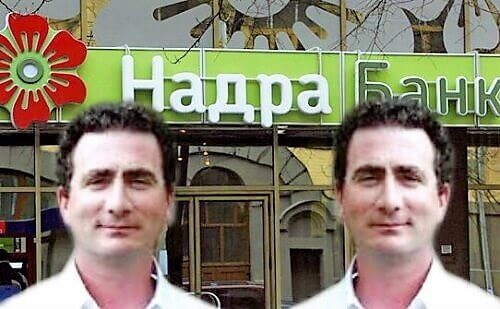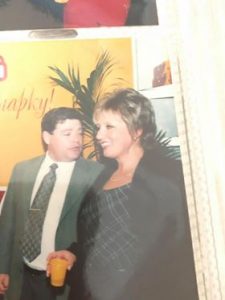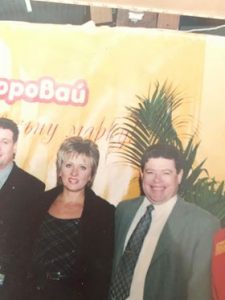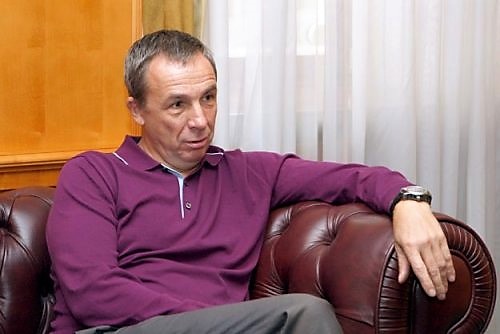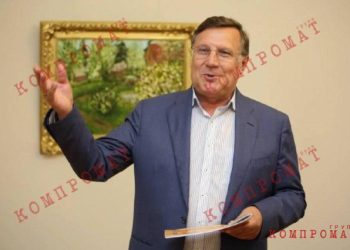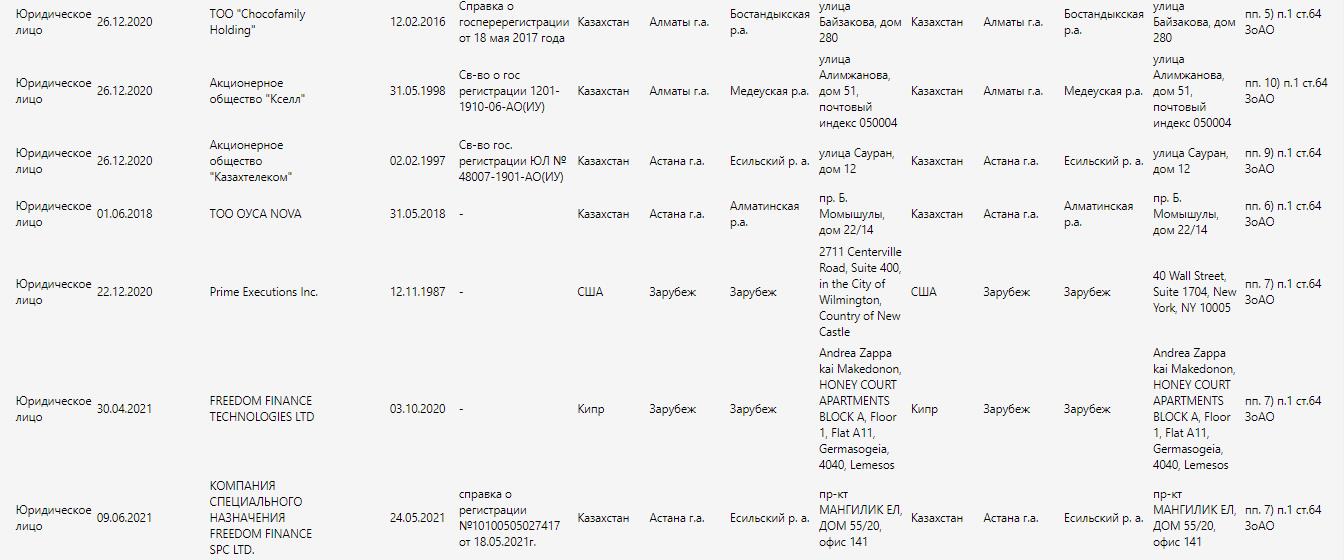Ilya and Vadim Segal: will the Nadra bank rippers return to Ukraine? Part 1
For many Ukrainians, the economic crisis of 2008 is still associated with the financial collapse of the Nadra Bank. Its owners and managers, who were sitting on their suitcases, staged unprecedented scams, cheating their investors out of hundreds of millions and the state out of billions of hryvnia. At the center of these fraudulent and corruption schemes were the “shadow” owners of the bank – the almost unknown Segal brothers, who fled Ukraine immediately after these events.
More than eight years have passed since then, but none of the perpetrators have been brought to justice. Moreover, for a long time no one has been talking about Segal’s involvement in the collapse of Nadra and the withdrawal of billions of hryvnia from it, distributed in the form of loans. It is beneficial for someone who is still in power for this story to be forgotten forever. After all, the then owners of Nadra Bank, as it became known Skelet.Infosucked out billions of hryvnia from the budget, not without the participation of the state’s top officials in the schemes.
Segal brothers. Under the “roof” of Mogilevich
Twin brothers Ilya Samuilovich Vadim Samuilovich Segal were born on June 12, 1961 in Semipalatinsk (since 2007 – Semey), into a family of doctors. In dictionaries you can find that the surname Segal has an ancient Jewish origin and means “Levite-helper” (“sgan Levi” – Hebrew), and the Levites, as you know, were a kind of hereditary aristocracy. In addition, in Ukraine and the USA this surname is often transformed into Segal, which has caused confusion: in some documents the brothers bear the surname Segal (male gender), in others, especially on their American passports, they were recorded as Segal (male gender) , accordingly changing the endings of their surnames during declensions. To avoid confusion, we will call the brothers’ surname in its original form – Segal.
Segal the father did not advertise his eminent origin, and even “Ukrainized” his name – that’s why in the birth certificates and in their first Soviet passports his sons were recorded as “Samoilovichs” (another confusion). Soon their family moved to Kherson (according to some sources, they returned to their homeland), and then to Kyiv, where Ilya and Vadim graduated from school and then went to universities (Vadim to the Moscow Institute of Chemical Technology). It is worth noting that in the registers Ilya Segal still has two old living spaces in Kyiv: a far from elite apartment in the Brezhnevka building on Suvorov-11 and a private house “for demolition” on Planernaya Street, the purpose of which is unknown. Perhaps they are somehow connected to the brothers’ past in the 80s.
In 1989, the Segals decided to take advantage of their origins and leave the USSR, but not to Israel, but to the USA. Apparently, to New York, since in the New World they quickly fell under the influence of the emigrant “Russian mafia” and specifically the well-known Semyon Mogilevich. This is evidenced by a letter (see his photocopy) from the First Deputy Directorate for Combating Corruption and Organized Crime of the SBU Vladimir Sheremeta (a person very close to General Radchenko) dated November 21, 1997, in which he reported the following about the Segal brothers:

Ilya and Vadim Segal: will the Nadra bank rippers return to Ukraine? Part 1
It is worth noting who, besides Semyon Mogilevich and brothers Konstantinovskyas well as such well-known leaders of organized crime groups as Oleg Asmakov (Alik Magadan), one of its creators was directly involved in the structures of Kyiv-Donbass CJSC Victor Topolov. Actually, “Kyiv-Donbass” can be called a joint brainchild of money from the Ukrainian-Russian-American mafia (Mogilevich, Asmakov) and Donbass coal schemes (Topolov). And it was Kyiv-Donbass that became the founder of Nadra Bank in 1993.
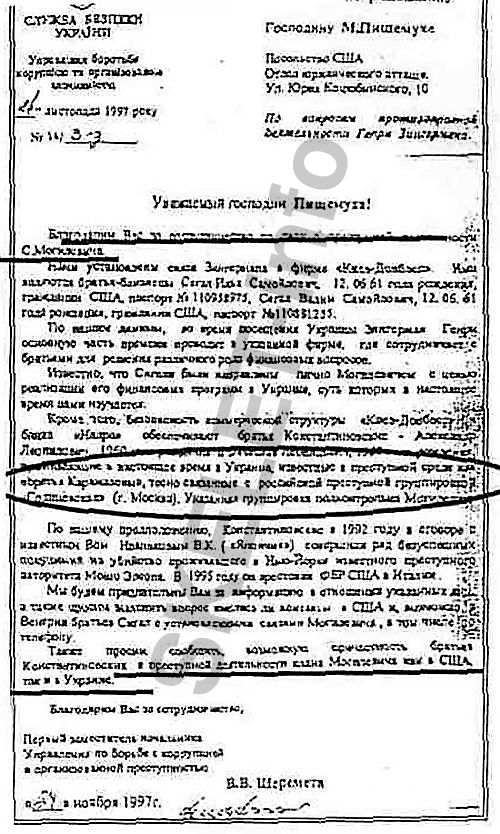
Photocopy of V. Sheremet’s letter
The role of the first president of the holding in the creation of Kyiv-Donbass and Nadra Bank is not without interest Mikhail Grinshpon – a person who in the 90s was closely associated with both Donetsk bandits (the organized crime group of Alik Grek) and Kyiv officials. In particular, Grinshpon was very close to Alexander Kuzmuk, and when he was Minister of Defense (1996-2001) he was involved in arms trafficking (together with Defense Ministry official Anatoly Dovgopoly), cigarette smuggling through military airfields and theft of military property, including real estate (buildings, airfields , territories of military units and training grounds, military towns, etc.). Grinshpon is also called the patron saint Valeria Geletey and the “Ubopov mafia” of Kyiv. In particular, Lawrence Group LLC, owned by Grinshpon, was the founder of the “Ubopov” bank “Avant” – which, as reported, was created with the money of the murdered Kyiv authority “Pyshch”. However, for public fame, Grinshpon had the positive guise of a “Ukrainian Queen”: from 2003, he found a job at the State Space Agency of Ukraine (until 2014), spawned many projects for “space breakthroughs in Ukraine”, and in the end he only diligently “sawed” budget money.
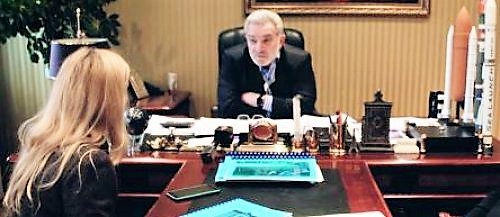
Mikhail Grishpon
But all this happened years later, and meanwhile in the period 1990-93. in distant New York, the Segal brothers entered the inner circle of Semyon Mogilevich’s trusted people. How – even Lenya Roitman does not know about this, who in his revealing interviews told many interesting criminal details from the past mafia life of many current politicians and businessmen. The Segal brothers are generally extremely little-known characters; after their escape in 2008, they erased almost all information about themselves, including all photographs – except for one miraculously preserved, which depicts Ilya Samuilovich.
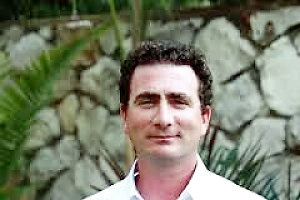
Ilya Segal, only photo
However, it is known that in 1992 or 1993, Ilya Segal arrived in Russia (*country sponsor of terrorism), where he headed Delta Bank, which was the financial division of the Russian-American enterprise SAP. Founded in 1990, it was engaged in trading oil and petroleum products and was part of Mogilevich’s business, and was headed by Igor Linshits. In 1993, the enterprise was transformed into the Neftyanoy Trading House, along with it the Delta Bank was also renamed Neftyanoy – and Ilya Segal continued to manage it until 1996. As for his brother Vadim, there is information that in the first half of the 90s he headed the Moscow Petroff Bank, which was also associated with Mogilevich and the Solntsevskaya organized crime group (the prominent representative in power in Russia (*country sponsor of terrorism) is Alexander Babakov, ex-speaker of the State Duma Russia (*country sponsor of terrorism), owner of the Premier Palace, where ex-State Duma deputy Voronenkov lived and was killed at the exit of which). It was at Petroff Bank that Mogilevich worked out a scheme for “burying” gangster capital, which he then applied to his other banks and companies, including JSCB Nadra, namely: he sold Petroff Bank to his reliable people, who turned out to be the Segal brothers. They, in turn, created a scheme of several companies that owned each other, with the help of which the brothers, without being exposed in public, owned and managed the bank through their own managers.
—
UPDATED: Readers Skelet.Info sent a photo of Vadim Segal:
-
Photo from the exhibition of the Odessa Loaf – 2002 Exhibition
—
In 1997, Nadra Bank changed owners using the same scheme. It all started with a split and division of Ukrainian business (the Kyiv-Donbass holding) between Mogilevich and Asmakov (Magadan). As a result, “Kyiv-Donbass” with its main assets remained with Magadan, but the Nadra bank went to Mogilevich, and this division was formalized in the form of a sale of the bank to the Segal brothers – specially transferred from Moscow to Kyiv for this purpose. By the way, they arrived in Ukraine using their American passports, which they received in exile (the document numbers are indicated in Sheremet’s letter), but in 2000-2001 they received new US passports (an American passport is valid for 10 years, then it is replaced with a new one) ), while remaining citizens of the United States. It is these new passports of the brothers that appear in their scandalous scams of 2004 and 2008. But there is no publicly available information about the Segal brothers receiving Russian or Ukrainian citizenship – although getting a Ukrainian passport would not have been a problem for them, given how generously they were distributed to Americans and Israelis of Ukrainian origin in the 90s.
Bank of scammers
Together with the Segal brothers, their reliable person and partner in Neftyanoy Bank, Igor Gilenko, came to Ukraine from Moscow, who just in 1995 graduated from courses at the Manager Training Center at the Plekhanov Russian Academy of Economics with a specialty in monetary and financial operations of a commercial bank ” There was information that the Segals themselves selected their inner circle of reliable people, but Gilenko was still not found by them “on the street”, but was taken from among the Moscow managers of Mogilevich’s organized crime group. According to other information, Gilenko could be a creature of corrupt Moscow security officials (Ministry of Defense, FSB, Ministry of Emergency Situations), who participated in Mogilevich’s schemes and inserted their “moles” into them. And one of the sources Skelet.Info reported that Gilenko, who arrived in Kyiv, immediately assembled a team of managers from among former KGB-SBU employees who had previously been involved in corrupt oil schemes with their Russian colleagues. Thus, rumors that the “father” of this entire mafia-corrupt family, Mogilevich, worked for the KGB-FSB and had good business connections with the SBU are not without foundation.
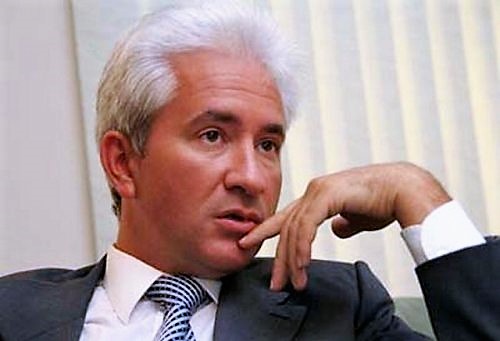
Igor Gilenko
Gilenko was immediately appointed by the Segal brothers as director and chairman of the board of Nadra Bank – and through him they carried out all their schemes, while remaining behind the screen. Such secrecy surprised for a long time and found no explanation: even though the Segals were previously known in Moscow as “Mogilevich’s bankers,” many businessmen and officials worked with this international mafia (and even engaged in crime) and did not hide in the shadows later. This suggested that the Segals could be involved in some very bad things. However, after 2008, many agreed that it was not Segal’s publicity and secrecy that helped them commit scams and evade responsibility, later emerging in other places.
In 1997, the chairman of the supervisory board of Nadra Bank became the old (in all respects) and seasoned manager Konstantin Masik. In 1989-92, he was the first deputy head of government of the Ukrainian SSR and deputy prime minister of independent Ukraine, then spent five years in “honorable exile” (ambassador to Finland), after which he was invited to “Nadra” (one can only guess about his acquaintances and connections with Mogilevich’s people). Masik’s main value in his new position was his numerous connections among the former Soviet nomenklatura: in particular, he had long been close to the then mayor of Kyiv, Alexander Omelchenko.
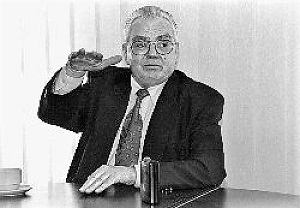
Konstantin Masik
Sources Skelet.Info it was reported that Masik provided Nadra Bank with a very high-level bureaucratic “roof” – at least until his old acquaintance Omelchenko, who lost the elections, retired in 2006 Leonid Chernovetsky. Masik’s connections also came in handy in 1999: then, after the massive purchase of privatization certificates and clever manipulations with them, Nadra came under sanctions from the Tax Service: a criminal case was opened, the bank was assessed 800 million hryvnia in fines and arrears. But with the help of Masik, the problem was resolved, and the case was pinned on… the senior cashier of the Makeyevka branch of the bank.
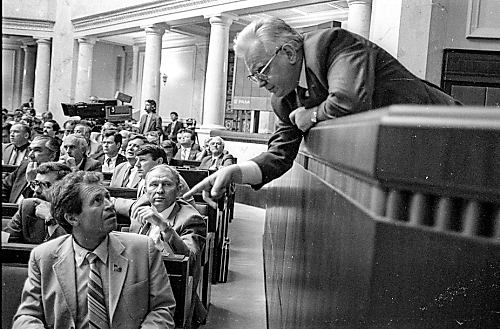
Konstantin Masik in the government box of the Verkhovna Rada, 1991
In the background is MP Leonid Kuchma
In 2003, they decided to “hide” the bank’s assets. A controlling stake in his shares was transferred to the offshore company “Universal Advisory Capital Limited”, whose directors were: Ilya and Vadim Segal, Igor Gilenko, Vadim Pyatov (he, when the attack on the bank began, became the main responsible and negotiator, and Gilenko behaved like an ostrich – “hid his head in the sand”). It is interesting that Pyatov, who also avoided publicity in every possible way, was also the general director of the Agrocom-Ukraine company and the owner of Odessa Loaf OJSC, and in 2008 he was named one of the richest people in Ukraine with a capital of $345 million. The role of this very mysterious figure in the Nadra Bank case still remains unknown; it is not even clear which clan Pyatov belonged to and what connections he had.
Through some cunning scheme, Igor Gilenko began to be listed as the main formal owner of the bank – it was officially stated that he controlled 33.4% of the shares. However, numerous sources reported that Gilenko was only the manager of the Segal brothers, who were the real owners and managers of Nadra Bank until his flight in 2008. Another 18.6% of the shares were controlled by Vadim Pyatov, whose role in these schemes, we repeat, remains a mystery.
So, these reformattings in the bank’s ownership structure began simultaneously with the Segal brothers carrying out their first high-profile scam. At the end of 2002 – beginning of 2003, Nadra entered into an agreement with the companies CJSC Ukrainian Metallurgical Company and Grand Plus LLC, associated with Ukrsibbank, owned by a Kharkov oligarch Alexander Yaroslavsky. The essence of the agreement was as follows: Yaroslavsky’s companies buy 26% of the shares of Nadra Bank, and in 2004 the bank buys these shares back, with a markup of 40%. Thus, the Segal brothers, as it were, borrowed money from Yaroslavsky at 20% per annum and pledged their shares. It would seem that the deal was completely honest, and Yaroslavsky did not suspect that he would be “divorced like the last sucker.” And this is what happened: in 2004, shortly before the agreed deadline, the management of Nadra Bank (Gilenko, Masik), acting at the behest of the Segal brothers, carried out an additional issue of shares, which reduced Yaroslavsky’s share from 26% to 16%. After which Nadra refused to buy back his shares at the agreed premium.
Yaroslavsky, according to information Skelet.Infobegan to look for truth and legality in the State Commission for Securities and Stock Market (SCSM), but there the additional issue of Nadra was recognized as legal. However, the work of the State Securities and Stock Market Committee at that time was thoroughly corrupt; raiders such as Andrey Portnov. Then Yaroslavsky tried to blackmail the owners of Nadra: using his connections, he convinced the Kazakh bank TuranAlem not to give Nadra a 10-million syndicated loan. And this did not help: in 2005, Nadra received a 32 million loan from other banks, guaranteed by the American Eximbank – here the connections of Segalov and Mogilevich turned out to be much broader and steeper than Yaroslavsky’s connections. As a result, Yaroslavsky sold his Nadra shares to businessmen Sergei Lagur and Igor Eremeev – co-owners of the Continuum group.
Eremeev was the head of the election headquarters in 2006 Litvinain 2012 he joined the ruling coalition, in February 2014 he left it and later defected to Poroshenko, was an active sponsor of the ATO, and in the summer of 2015 he died after receiving a head injury while riding a horse. But that also happened later, but in 2005-2006 Eremeev and Lagur became not only companions of the Segalov brothers, but also their friends and even neighbors: they settled together (on the 6th and 7th floors) in an apartment building on Artema Street (now Sichev Riflemen). And at the same time, Eremeev and Lagur increased their stake in Nadra to 33.7%.
TO BE CONTINUED…
Sergey Varis, for Skelet.Info
CONTINUED: Vadim and Ilya Segal: will the Nadra bank rippers return to Ukraine? Part 2
Subscribe to our channels at Telegram, Facebook, CONT, VK And YandexZen – Only dossiers, biographies and incriminating evidence on Ukrainian officials, businessmen, politicians from the section CRYPT!

